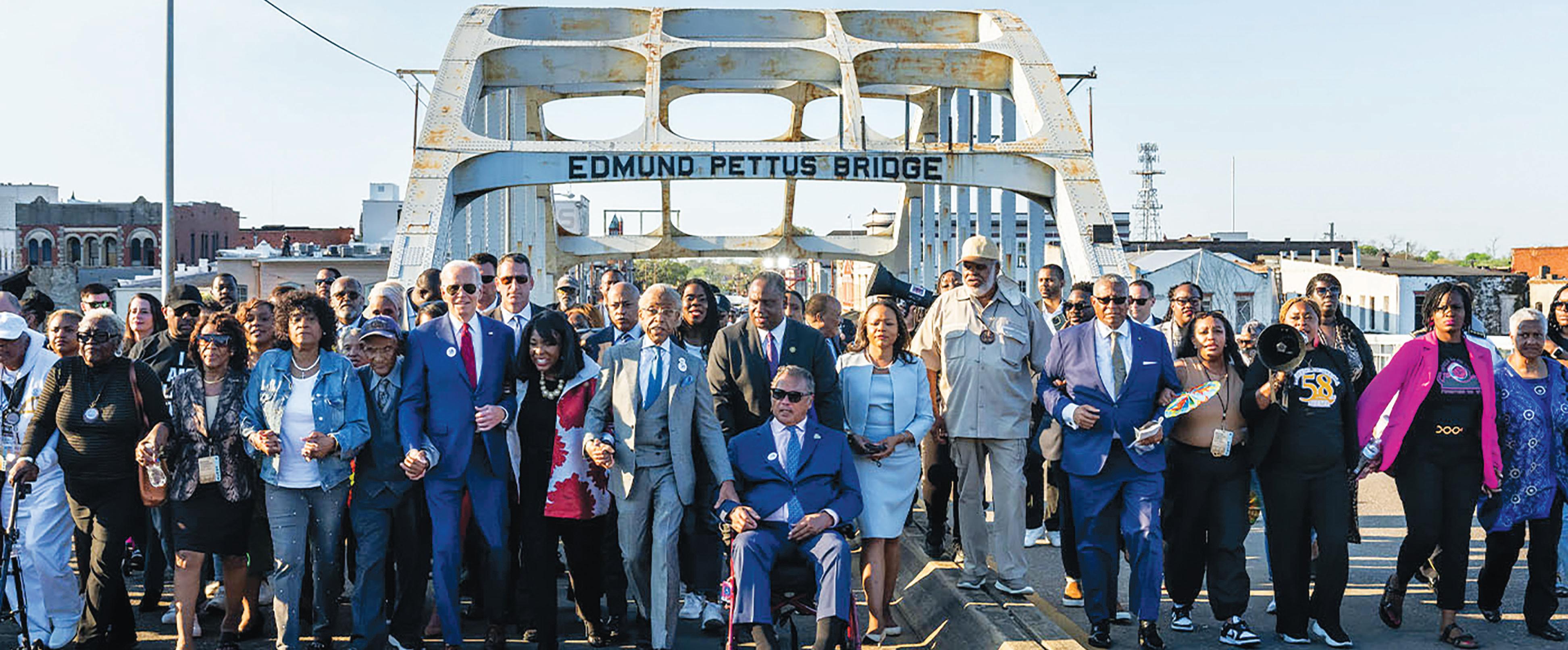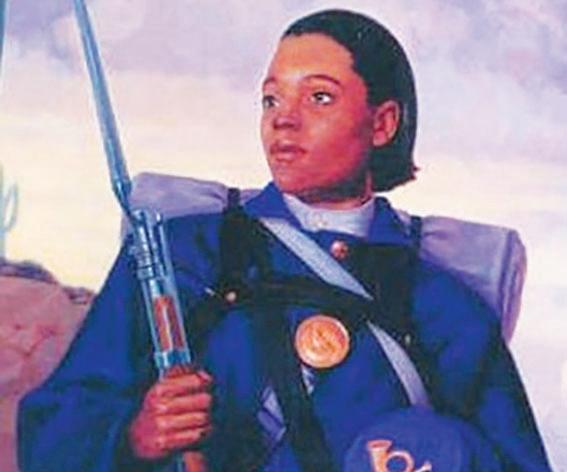
4 minute read
Biden at 58th Anniversary of “Bloody Sunday”
By Brandon Patterson
The annual pilgrimage commemorates the events of March 7, 1965, when civil rights demonstrators attempting to cross the Edmund Pettus Bridge from Selma to Montgomery were met by police officers and white counter demonstrators who attacked them as they marched for voting rights. Civil rights legends including Rev. Jesse
Jackson, Martin Luther King III, and Rev. Al Sharpton, joined congress members including Rep. Jim Clyburn and Rep. Maxine Waters, and many other people who traveled to Selma to commemorate the event.. Biden decried attacks on voting rights from conservative Supreme Court justices and state legislatures and renewed his call for strengthening voting rights with the John Lewis Voting Rights
Advancement Act, named for the late congressman who, at age 25, was among those attacked on Black Sunday. Lewis was then chairman of the Student NonViolent Coordinating Committee (SNCC) and helped plan the march, which spurred the passing of the Voting Rights Act of 1965.
“The right to vote — the right to vote and to have your vote counted is the threshold of democracy and liberty,” said Biden.“With it, anything is possible. Without it — without it nothing is possible. And this fundamental right remains under assault.” “We must remain vigilant,” he said. Brenda Knight, cofounder of Ladies in Red, a San Franciso Bay Area organization that travels around the country with seniors to learn about African American history, told the Oakland Post the weekend included a Foot Soldiers
Breakfast honoring those who marched on Blood Sunday, an awards ceremony, a film screening, and educational panels.
Knight said, “If it wasn’t for the foot soldiers, we wouldn’t have rights. If our children understood how many people died for their rights, they would vote more. If our kids know the history, they would stop taking our voting rights for granted.”
Knight said commemorating anniversaries like Bloody Sunday was even more important considering recent book bans and attempts to ban African American history in schools. “Our history is American history,” she said. “We have to do what we need to do to make sure our history is told. Because they’re taking the books. We can’t stop talking.” This Black Press USA article originally appeared in the Oakland Post
Cathay Williams was born to an enslaved mother and a free father in Independence, Missouri in 1844. During her adolescence, she worked as a house slave on the Johnson plantation on the outskirts of Jefferson City, Missouri. In 1861, Union forces occupied Jefferson City during the early stages of the Civil War. At this time, captured slaves were officially designated as contraband and some served in military support roles such as cooks, laundresses, or nurses.
Before her voluntary enlistment, at just 17 years old, Williams served as an Army cook and a washerwoman. In this role she accompanied the infantry all over the country. Williams served under the service of General Philip Sheridan and witnessed the Red River Campaign and the Battle of Pea Ridge.
Despite the prohibition against women serving in the military, Williams enlisted in the U.S. Regular Army under the false name of “William Cathay” on November 15, 1866. She enlisted for a three-year engagement, passing herself off as a man. Williams was assigned to the 38th U.S. Infantry Regiment after she passed the cursory medical examination. Though this exam should have outed her as a woman, the Army did not require full medical exams at this time.
Shortly after her enlistment, she contracted smallpox and was hospitalized. Williams rejoined her unit in New Mexico. There, possibly due to the effects of smallpox, the heat, or the years of marching, her body began to show signs of strain. Due to her frequent hospialization, the post surgeon finally discovered she was a woman and informed the post commander. She was honorably discharged by her commanding officer, Captain
Charles E. Clarke on October 14, 1868. Though her disability discharge meant the end of her tenure with the Army, her advenure continued. She signed up with an emerging all-black regiment that would eventually become part of the legendary Buffalo Soldiers.
Following her discharge, Williams went on to work as a cook at Fort Union, New Mexico (now Fort Union National Monument) and later moved to Pueblo, Colorado. Though she married, it ended badly after her husband stole her money and a team of horses. Williams had him arrested and then moved to Trinidad, Colorado, where she worked as a seamtress. It was during this time that her story first became public. A reporter from St. Louis heard rumors of a female African-American who had served in the army and came to interview her. Her life and military service narrative was published in the St. Louis Daily Times on January 2, 1876.
Around 1889 or 1890, Williams entered a local hospital and applied for a disability pension based on her military service. Though there was a precedent for granting pension to female soldiers, (Deborah Sampson, Anna Maria Lane and Molly Williams disguised themselves as men in the Revolutionary War), Williams request was denied. In September 1893, a doctor examined Williams. She suffered from neuralgia and diabetes, and had all her toes amputated and walked with a crutch. The doctor decided that she did not qualify for disability payments.The exact date of her death is unknown, but it is believed she died shortly after she was denied.
What Makes Cathay Williams
An American Hero:
Though over 400 women served in the Civil War posing as male soldiers, Williams was the first African American woman to enlist and the only documented woman to serve in the United States Army, while disguised as a man, during the Indian Wars. Williams is also the only known female Buffalo Soldier. Williams’ determination to serve her country demonstrates the extraordinary feats women have accomplished simply trying to live their lives.










